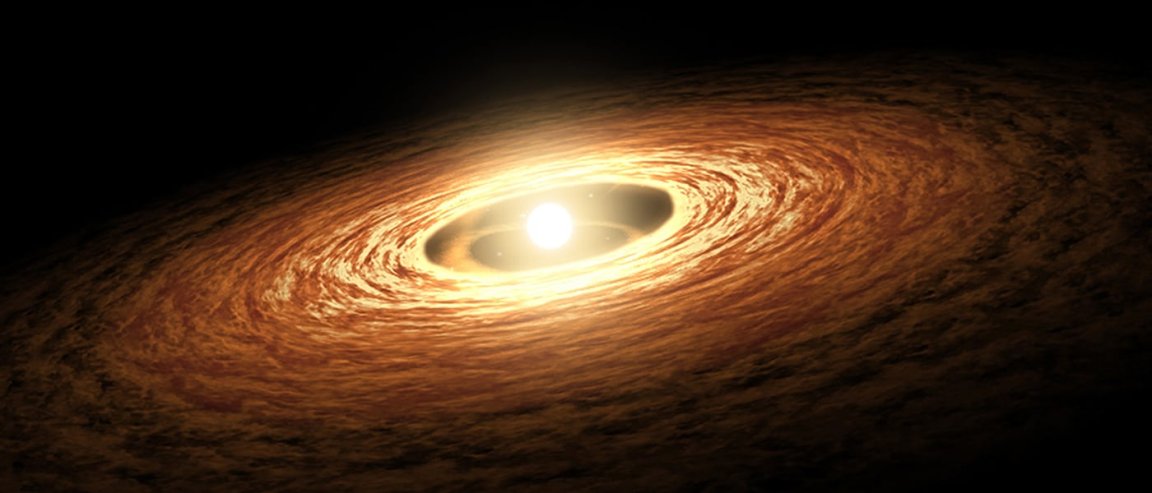
Mysterious Void
For the first time ever, a team of astronomers from Rice University have mapped gases in three dark rings surrounding a young star almost 400 light years away, known as HD 163296. The rings are spaces in the star’s protoplanetary disk that are devoid of dust particles. This implies that planets are forming. However, while the two outer rings are consistent with having been cleared up by revolving new planets, the innermost ring holds a mystery.
The innermost ring contains a substantially higher concentration of three carbon monoxide isotopes than the outer two, suggesting that there’s no planet there. What’s clearing up that ring, however, is still unknown.
“The inner gap is mysterious,” lead astronomer Andrea Isella said. “Whatever is creating the structure is removing the dust but there’s still a lot of gas.”

“Of the material that formed this disk, about 1 percent is dust particles and 99 percent is gas,” Isella said. “So if you only see the dust, you cannot tell if a ring was formed by a planet or another phenomenon. In order to distinguish and really tell if there are planets or not, you need to see what the gas is doing, and in this study, for the first time, we can see both the dust and the gas.”
To the ALMA
So what could be causing the void if not a planet? While there are very few theories to explain the void, the researchers have already been granted access to the Atacama Large Millimeter/submillimeter Array (ALMA) in Chile to continue their study, which was published in Physical Review Letters. The ALMA is, after all, also dedicated to the study of protoplanetary systems. These efforts will help us understand how planets like the Earth formed.
“It means our topic is considered by the astronomical community to be one of its highest priorities,” he said. As a next step, the team will be studying the chemistry within the disk and rings, and will be surveying 20 more stars for comparison. The results are expected to be out by September next year.
Tools such as the ALMA and the upcoming mega-powered James Webb telescope are helping us better understand our universe. Knowing how its formed is key to understanding where we are going.